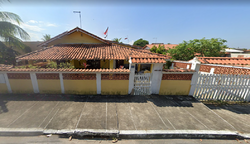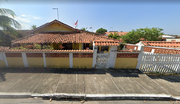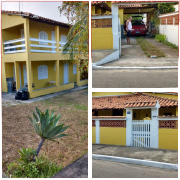Amsee
This article needs to be updated. |
Amsee | |
|---|---|
| Mottoes: Plus Mare Beyond the sea | |
 | |
| Country | |
| Region | Ebenthaler Riviera |
| Settled | 1981 |
| Inc. Ebenthal | 30 December 2019 |
| Monarchy end | 5 February 2022 |
| Succeeded by Tussen | 18 February 2024 |
| Government | |
| • Type | Executive-led devolved administration |
| • Chief Executive | Felipe Saint |
| Area | |
| • Total | 0.5 km2 (0.2 sq mi) |
| Elevation | −2 m (−7 ft) |
| Population (2022) | |
| • Total | 5 (permanent) |
| • Rank | 7th |
| Demonym | Amsean |
| Time zone | UTC−3 |
| Postal Code | 28990-000 to 28999-999 |
| Area code | +55 22 |
| HDI (2022) | 0.823 very high (TBD) |
Amsee (German pronunciation: [ˈamzeː]), officialy Municipality of Amsee (Portuguese: Município de Amsee) was one of the eight municipalities of Ebenthal. It was the third least populous Ebenthaler administrative division, with only 5 permanent residents within its 0.5 km² entirely landlocked by the Brazilian municipality of Saquarema. The Amsee is also the largest administrative unit in Ebenthal by water territory, claiming the coast of the Saquarema lagoon, locally known as Wasserteich Lagoon, which bathes its territory. The claim is based on the determination of the Saquarema city hall that it is the responsibility of the owners to take care of the parts of the lagoon that bathe their properties and which properties are bathed for the lagoon they had to pay a tax corresponding to the expansion of the property, that is, as if the portion of the lagoon that bathes the property was part of it. The municipality is administered through an assembly-independent executive-led devolved government by a Chief Executive appointed by the King of Ebenthal according the the municipality's parliamentary representation.
The Amsean history pre-dates its micronational existence, as the territory which comprises the modern province had been inhabited by Tupi indians for centuries. In 1594 the Portuguese settlers enslaved and expelled the indians and established a sesmaria which became the freguesia (parish) of Saquarema, initially as part of the larger region of Araruama, within the colonial State of Brazil. Following the Brazilian independence in 1822, Saquarema was elevated to a municipality in 1841, and the town became a tourism destionation for Rio de Janeiro inhabitants who who started to expand the town building summer houses. In 1981 Carlos Manoel dos Santos bought a summer house in Saquarema, which was inherited by his son, Reinaldo Monteiro dos Santos, King Arthur II's stepfather, in 2018. The next year, upon assuming the Ebenthaler throne and as heir to the Amsean estate, Arthur annexed the property into his kingdom as the Principality of Nëbensee. From the beggining, the principality lacked internal political activity, although it contributed to the national politics through its representatives in the parliament. In 2022 the Amsean monarchy was abolished along with the country's other subnational monarchies. Finally in 2024 the Redivision Act completely restructured Ebenthal's model of administrative divisions, stripping Nëbensee from its provincial status, keeping the municipal one and renaming it Amsee.
Amsee's territory consists of a large house and a small two-store building, as well as a vast garden and a swimming pool. Despite its small size, Amsee is widely believed to be Ebenthal's biggest tourist destination, especially popular with the inhabitants of Malmünd, Sanktsaat and Erzfelsen due to its tropical climate and proximity to the sea and to the large regional lagoon, to which the town have direct access. Consequently, Amsee's economy is largely dependent on tourism, but there is also scope for fishing and crafts.
Etimology
The name "Amsee" is a portmanteau of the German toponymic preffix Am (next to) and the German word See (sea), and it thus means "next to the sea", as the municipality is located less than 100 meters from Saquarema beach, in the Brazilian municipality of the same name.
Gallery




